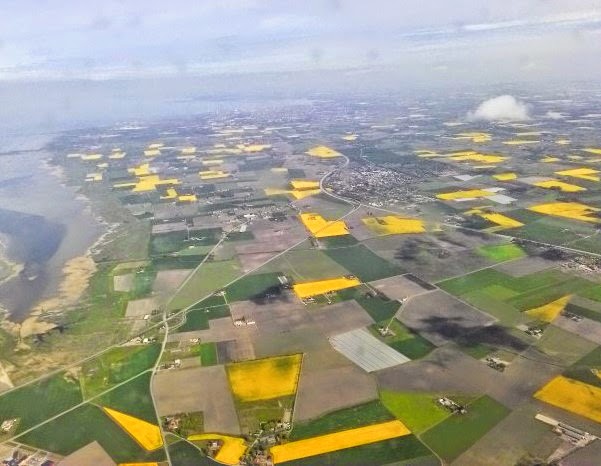The word "yellow" comes from the Old English geolu, geolwe, meaning "yellow, yellowish", derived from the Proto-Germanic word gelwaz. It has the same Indo-European base, -ghel, as the word yell; -ghel means both bright and gleaming, and to cry out. Yellow is a color which cries out for attention.
Yellow is commonly associated with gold, wealth, sunshine, reason, happiness, optimism and fun and it plays an important part in some cultures.
I took this picture at about 9:00 yesterday morning. This yellow patches stunned the window-seaters just before we came in for landing in Kopehavn. The captain took a swanky swirl over the surroundings of Malmo, in Southern Sweden. I wondered what the bright yellow squares were.
It is Rapeseed (Brassica napus), also known as rape, oilseed rape, rapa, rappi, rapaseed (and, in the case of one particular group of cultivars, canola), is a bright yellow flowering member of the family Brassicaceae (mustard or cabbage family).
The name derives from the Latin for turnip, rāpa or rāpum, and is first recorded in English at the end of the 14th century. Older writers usually distinguished the turnip and rape by the adjectives round and long (-rooted), respectively. Rutabagas, Brassica napobrassica are sometimes considered a variety of Brassica napus (according to my friend Google).
Brassica napus is cultivated mainly for its oil-rich seed, the third largest source of vegetable oil in the world.




